Research
The early research of the team in the 1980’s was focused on fluvial dynamics in Peruvian Amazonia and how this is linked to vegetation succession, forest diversity and Andean tectonics. In the 1990’s, the scope shifted to floristic composition and geological history of the vast expanses of non-inundated forests in western Amazonia. In the 2000’s, we have increasingly used DNA sequencing methods to tackle questions related to phylogeny and evolutionary processes in Amazonia. Remote sensing has been in our toolbox from the beginning, but in the 2010’s we have started to tackle basin-wide questions, including species distribution modelling. Although we still call ourselves the Amazon Research Team, our geographical focus has actually expanded to include Central America and tropical Africa as well.
Community ecology and species richness gradients
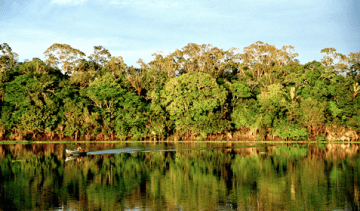 Tropical rain forests are fascinating environments and famous for their high species diversity. However, relatively little is known about how plant and animal communities vary in these forests over space and in time, and how compositional changes relate to environmental variation. Because obtaining representative data on all species over large and partly inaccessible areas is a practical impossibility, our ecological studies in the neotropical lowlands mostly focus on two plant groups (ferns and the Melastomataceae), and one animal group (parasitoid wasps).
Tropical rain forests are fascinating environments and famous for their high species diversity. However, relatively little is known about how plant and animal communities vary in these forests over space and in time, and how compositional changes relate to environmental variation. Because obtaining representative data on all species over large and partly inaccessible areas is a practical impossibility, our ecological studies in the neotropical lowlands mostly focus on two plant groups (ferns and the Melastomataceae), and one animal group (parasitoid wasps).
The botanists have roamed widely to collect plant specimens and ancillary environmental data from hundreds of standardized inventory transects spread across Amazonia, as well as some other areas such as Costa Rica and Panama. Parasitoid wasp sampling has been done by Malaise trapping in fewer sites, focusing on western Amazonia and eastern Africa (Peru and Uganda, respectively), but producing long time series that can be used to assess species accumulation trends and seasonality.
On the basis of these large datasets, we are studying the distributions of individual species as well as spatial patterns in community composition, species turnover and species richness.
We are especially interested in how community properties relate to current environmental conditions (such as soils and climate) and the geological history of the relevant area. To obtain more general understanding about the rain forest ecosystem, we are also assessing to what degree understorey plant groups can be used as indicators of compositional patterns in other taxa, such as trees, birds and mammals.
Researchers: Hanna Tuomisto, Gabriela Zuquim, Lassi Suominen (ferns); Kalle Ruokolainen (Melastomataceae); Ilari Sääksjärvi, Tapani Hopkins (parasitoid wasps); Pablo Pérez (trees)
Remote sensing for vegetation mapping and species distribution modelling
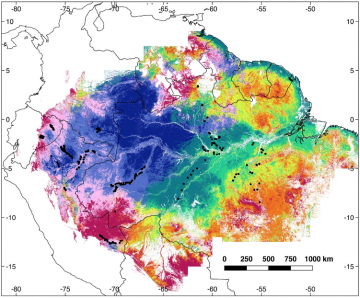 Amazonia is a huge area and many parts of it are difficult to access. Therefore, we make extensive use of remote sensing, which provides the means to see the forest from above and get an overview of variation in the landscape and vegetation.
Amazonia is a huge area and many parts of it are difficult to access. Therefore, we make extensive use of remote sensing, which provides the means to see the forest from above and get an overview of variation in the landscape and vegetation.
Already early on, we found that Landsat TM and ETM+ images provide useful information about floristic variation in Amazonian forests. However, technical problems made it impossible to reliably compare pixel values over long distances, which limited image interpretation to the vicinity of field inventory sites.
Now we have solved those problems and have produced a basin-wide composite of Landsat imagery. The first analyses using the composite have produced exciting results: it has made it possible to propose major geoecological regions in Amazonia, and has also proved useful as a data layer in species distribution modelling. We continue to explore the potential of the Landsat composite for these and other purposes, such as conservation planning.
Researchers: Jasper Van doninck, Hanna Tuomisto, Pablo Pérez, Kalle Ruokolainen
Landscape dynamics at geological time scales
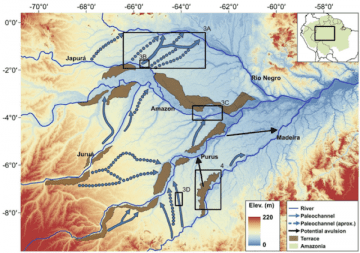 Early research of the team focused on fluvial dynamics and its effects on succession and heterogeneity of floodplain vegetation in Peruvian Amazonia. These processes were then linked to broader tectonic events related to the uplift of the Andes and to general landscape evolution, with geological studies especially focusing on the palaeoenvironmental history of western Amazonia in the Miocene.
Early research of the team focused on fluvial dynamics and its effects on succession and heterogeneity of floodplain vegetation in Peruvian Amazonia. These processes were then linked to broader tectonic events related to the uplift of the Andes and to general landscape evolution, with geological studies especially focusing on the palaeoenvironmental history of western Amazonia in the Miocene.
Ever since the beginning, our ecological studies have been carried out with the idea of figuring out to what degree the effects of past geological events might still affect current vegetation composition and species distributions. The contrast between the clayey sediments left behind by the Miocene Pebas wetlands and more recent fluvial sediments has proved especially interesting in this respect.
Recently, we have made a full circle and returned to studying fluvial dynamics, especially to document how the river network in central Amazonia has been changing, and what implications this might have for biogeography.
Researchers: Kalle Ruokolainen, Risto Kalliola, Hanna Tuomisto, Gabriela Zuquim
Taxonomy and tools for species identification
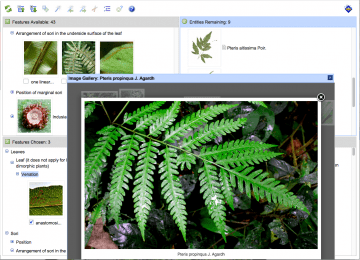 When identifying the material collected in the field, we have often had difficulties in assigning specimens to species. Most commonly, this has been because no recent taxonomic treatment of the group existed, so there were no identification tools and it was even uncertain how many species the group contains and what the valid names for the species are. Therefore, we have also made taxonomic revisions and described many new species and even some new genera. Our team includes both dedicated systematists and such ecologists who started to do taxonomy because internal species tags (such as Miconia sp42) are useless for communicating species-specific ecological results to a wider audience. Our taxonomical research focuses on parasitoid wasps (Hymenoptera: Ichneumonidae), ferns (especially Marattiaceae and Lindsaeaceae), centipedes (Scolopendromorpha), the shrub family Melastomataceae (especially Adelobotrys) and the aquatic plant genus Echinodorus (Alismataceae).
When identifying the material collected in the field, we have often had difficulties in assigning specimens to species. Most commonly, this has been because no recent taxonomic treatment of the group existed, so there were no identification tools and it was even uncertain how many species the group contains and what the valid names for the species are. Therefore, we have also made taxonomic revisions and described many new species and even some new genera. Our team includes both dedicated systematists and such ecologists who started to do taxonomy because internal species tags (such as Miconia sp42) are useless for communicating species-specific ecological results to a wider audience. Our taxonomical research focuses on parasitoid wasps (Hymenoptera: Ichneumonidae), ferns (especially Marattiaceae and Lindsaeaceae), centipedes (Scolopendromorpha), the shrub family Melastomataceae (especially Adelobotrys) and the aquatic plant genus Echinodorus (Alismataceae).
We also work to make it possible for non-taxonomists to make species inventories, as species occurrence data is useful for such applied purposes as conservation planning. We have already produced an illustrated online identification key to Amazonian ferns. We are also collecting occurrence information for Amazonian ferns through crowdsourcing, using the mobile phone based platform iNaturalist. Have a look here and contribute your own photos to the increasing database!
Researchers: Samuli Lehtonen, Hanna Tuomisto, Gabriela Zuquim, Glenda Cárdenas, Janina Keskiniva (ferns); Ilari Sääksjärvi (parasitoid wasps); Carlos Martinez (centipedes); Kalle Ruokolainen, Nelly Llerena (Melastomataceae)
Reconstructing evolutionary history
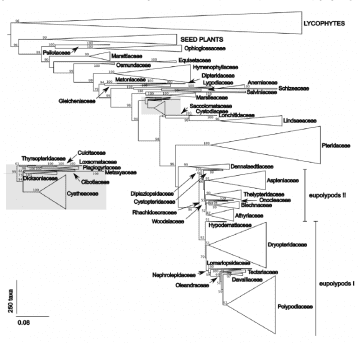 One of the intriguing questions about the tropical rain forests is how and why all those species originated. We hope to shed light on this question by combining information on present-day geographical and environmental distributions of species with reconstructions of their phylogenetic relationships and of the geological and climatic history of the continent. Our evolutionary studies focus on ferns (especially Marattiaceae and Lindsaeaceae), parasitoid wasps and centipedes.
One of the intriguing questions about the tropical rain forests is how and why all those species originated. We hope to shed light on this question by combining information on present-day geographical and environmental distributions of species with reconstructions of their phylogenetic relationships and of the geological and climatic history of the continent. Our evolutionary studies focus on ferns (especially Marattiaceae and Lindsaeaceae), parasitoid wasps and centipedes.
Researchers: Samuli Lehtonen, Hanna Tuomisto, Glenda Cárdenas, Janina Keskiniva (ferns); Ilari Sääksjärvi (parasitoid wasps); Carlos Martinez (centipedes)
Bamboo dynamics
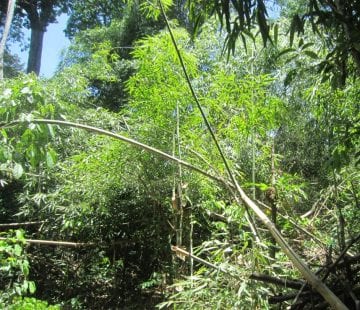 Southwestern Amazonia, in the border zone between Peru, Brazil and Bolivia, harbors the largest bamboo-dominated forests on Earth. These forests are interesting from various points of view. The bamboo has a 28-year-long cycle of semelparous gregarious flowering that produces local superabundance of large seeds that serve as a food source for a number of animal species. After flowering, the bamboo dies and the dead biomass is potentially flammable.
Southwestern Amazonia, in the border zone between Peru, Brazil and Bolivia, harbors the largest bamboo-dominated forests on Earth. These forests are interesting from various points of view. The bamboo has a 28-year-long cycle of semelparous gregarious flowering that produces local superabundance of large seeds that serve as a food source for a number of animal species. After flowering, the bamboo dies and the dead biomass is potentially flammable.
Bamboo has potential to become a source of fiber for various industrial purposes, but on the other hand it makes thorny thickets that are a nuisance for all activities in the forest.
Interestingly, in the same area where the bamboos grow, there has been pre-Colombian civilisation that has produced hundreds of geoglyphs. These are ditches that make various geometric figures, such as circles and squares, that can be up to 200 m across. In collaboration with biologists, paleontologists, archeologists and ethnographers from Peru, Brazil and the University of Helsinki, we are studying the spatio-temporal distribution and flowering dynamics of the bamboo. We are especially interested in how the distribution of the bamboo and/or timing of the flowering might be related to various features of the physical or biological environment, or even to past or present human activities.
Researchers: Risto Kalliola, Kalle Ruokolainen, Jasper Van doninck, Hanna Tuomisto, Pablo Pérez
Andean montane forest ecology
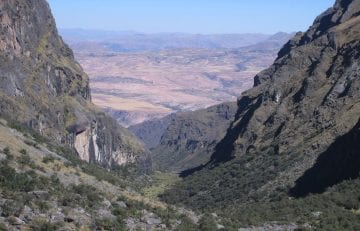 In the Andes, we carry out research on montane forests. One line of research aims to understand how climate and human activities have shaped the Andean montane forest distribution in the past and what is the likely future of these forests. Another focus is on the diversity of epiphytic mosses and liverworts and their functional importance for hydrology in montane cloud forests.
In the Andes, we carry out research on montane forests. One line of research aims to understand how climate and human activities have shaped the Andean montane forest distribution in the past and what is the likely future of these forests. Another focus is on the diversity of epiphytic mosses and liverworts and their functional importance for hydrology in montane cloud forests.
Researchers: Johanna Toivonen, Tinja Pitkämäki, Lassi Suominen
Conceptual questions related to beta-diversity
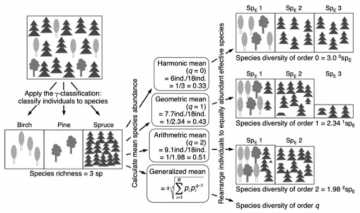 Over the years, we have been scratching our heads over conceptual and methodological issues. Especially the term beta-diversity has been used in a bewildering number of different ways in the literature. We have discussed both what the different versions of the term mean in practice, and which data analysis approaches are appropriate to answer different questions related to them.
Over the years, we have been scratching our heads over conceptual and methodological issues. Especially the term beta-diversity has been used in a bewildering number of different ways in the literature. We have discussed both what the different versions of the term mean in practice, and which data analysis approaches are appropriate to answer different questions related to them.
Researchers: Hanna Tuomisto, Kalle Ruokolainen
People and forest - integrating natural and social sciences
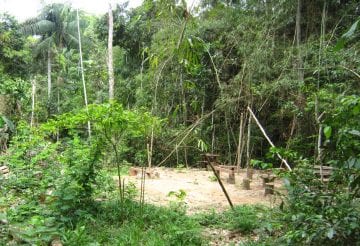 Although people have been using the Amazonian forests for millennia, the present trends are alarming because changes occur over large extents and at unprecedented speed. The future is crucially dependent on management decisions taken by a variety of actors. Scientific understanding is often needed in such way where natural and social aspects are combined. Our multidisciplinary research team is interested in topics like wild species harvest, forest management planning, conservation, land-use, complex socio-ecological systems and regional development. Characteristic to these studies, researchers are from many different scientific fields (e.g. biology, geography, rural development, forestry, archaeology).
Although people have been using the Amazonian forests for millennia, the present trends are alarming because changes occur over large extents and at unprecedented speed. The future is crucially dependent on management decisions taken by a variety of actors. Scientific understanding is often needed in such way where natural and social aspects are combined. Our multidisciplinary research team is interested in topics like wild species harvest, forest management planning, conservation, land-use, complex socio-ecological systems and regional development. Characteristic to these studies, researchers are from many different scientific fields (e.g. biology, geography, rural development, forestry, archaeology).
Researchers: Risto Kalliola, Sanna Mäki and many of our former team members, especially Matti Salo, Anders Sirén and Jaana Vormisto.
Climate change effects on Amazonian biodiversity
In 2021-2024, we coordinate the Biodiversa project “Assessing the effects of past and future climate change on Amazonian biodiversity” (CLAMBIO). This is a consortium of five institutions: University of Turku (Finland), Karlsruhe Institute of Technology (Germany), National Institute of Amazonian Research (Brazil), University of São Paulo (Brazil) and University of East Anglia (UK). More information can be found here.
Past research that continues elsewhere
Distribution and carbon stock of Amazonian peatlands
Until recently, it was assumed that Amazonian wetlands do not accumulate peat, but our ecological inventories sometimes encountered thick layers of peat when taking soil samples. This observation triggered studies dedicated to the topic, and it was indeed found that Amazonian peat deposits are comparable to those in South East Asia. It was even shown that there are ombrotrophic peat bogs, which have floristic affinities to white sand forests.
These studies were led by Outi Lähteenoja, who now continues research on the topic at the Arizona State University, USA (see more info here).
Evolutionary history of butterflies
One of the groups whose evolutionary history we have studied using genetic markers is butterflies, especially the Nymphalids.
This research line was led by Niklas Wahlberg and now continues in the University of Lund, Sweden (see here for more info).
